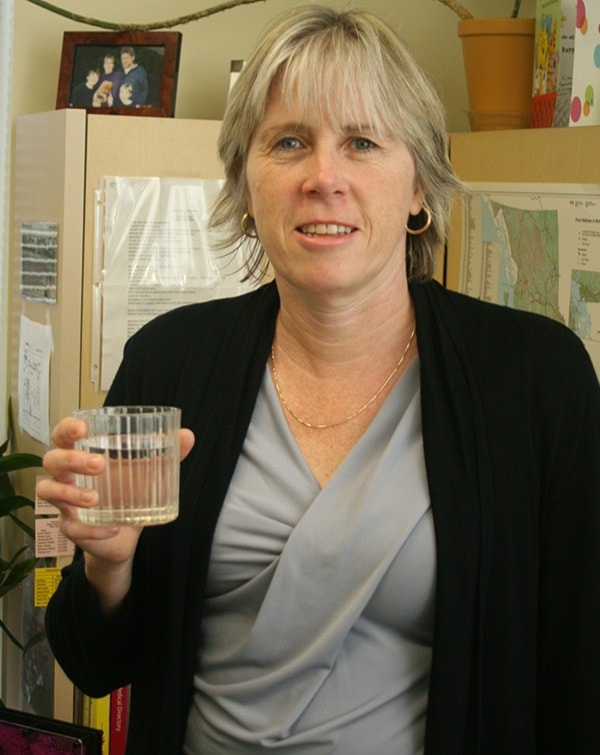This is the first in a three-part series about sustainable use in the Comox Lake Watershed.
A conservation group has compiled a proposal to protect water quality and enable public access while supporting sustainable use in the Comox Lake watershed.
The Comox Valley Conservation Strategy Community Partnership suggests land use in the watershed is putting drinking water at risk to the point where the regional district might have to spend $32 million on a treatment plant.
The Proposal for a Comox Lake Watershed Sustainable Use Recreation Area includes recommendations for senior levels of government intended to protect drinking water and the watershed's ecology.
For instance, it suggests the Province establish a public authority that would include recreation groups and TimberWest, the majority owner of the watershed. The idea is to develop a plan for the 44,000 hectares between the Valley and Strathcona Provincial Park, one-third of which is protected.
Because it's on private land, the partnership says the watershed is not being managed.
"We're trying to put out a concept," project manager David Stapley said. "Why don't we own it, or at least control it, so that it will function well forever?
“I can't think of any place where the community ended up taking control of their watershed that they regretted that decision."
The group suggests there is no single agency or public authority that manages the health of the watershed, which is at risk from logging, land development, recreation and other threats. Instead, it says various stakeholders assert their own interests.
"We're looking for some leadership," Comox Valley Land Trust executive director Jack Minard said while recently addressing the board of the CVRD, which he considers the lead agency. "We're talking about a place of beauty for all time."
Stapley and Minard have also presented the proposal to Valley councils and the land trust.
The CVRD board voted to use the document as a resource and to include the CVCSCP as a stakeholder as the district progresses through a watershed protection planning process.
Also endorsing the document is the K'ómoks First Nation, which has an interest in using water from Comox Lake to meet domestic needs. The band will require access to lakewater to service its fee simple and treaty settlement lands.
"We see our role as stewards of the Puntledge River system from the K'ómoks Estuary to the headwaters of Comox Lake," KFN chief Rob Everson states in a letter to Stapley. "Protection of the health of this water source is vital to the long-term interests of the KFN."
Vancouver Island Health Authority medical health officer Charmaine Enns feels the document contains some sound ideas on watershed protection, but considers parts of the proposal "curious and problematic."
She questions why work is needed around processes already underway, and questions the group's idea of an authority since the supplier — the CVRD — has been mandated to develop a multi-use plan for the watershed.
"The CVRD has worked very hard, I think, to meet our (Island Health, formerly VIHA) requirements as a water supplier for a large water supply," Enns said. "It's not easy when you don't own the land."
This is unlike Victoria's watershed, which is publicly owned. Vancouver's is also protected.
"There's nobody in that watershed," Enns said. “We have a very different scenario here."
She suggests a multi-barrier approach is needed, starting at the source then going to treatment, distribution and monitoring.
"The water supplier, the CVRD, is very aware of the risks in that watershed," Enns said, noting an assessment conducted several years ago.
In 2007, VIHA introduced a 4321 drinking water policy, stipulating new requirements for water from streams or lakes.
The regional district has been trying to determine how to comply with new standards because the existing intake on the Puntledge does not meet the turbidity standard, says Marc Rutten, senior manager of engineering services.
The CVRD started a continuous water quality monitoring program on Comox Lake that yielded a year's worth of results. Based on the results and on meetings with VIHA, the district is recommending a deep-water intake but not a treatment/filtration plant.
VIHA allowed the CVRD to defer filtration. But even if a filtration plant is constructed, Rutten said the district would probably build a deep-water intake regardless. It would cost $18 or $19 million to install.
Enns said the location of the intake is problematic because the risks that pose the biggest problems are the ones closest to the intake.
"It's at the bottom of the funnel," she said. "Everything happening in Comox Lake potentially goes down that funnel."
Therefore, she said activities closest to the intake are the ones that require attention.
Minard said the partnership realizes the vulnerable place between the outfall of the lake and the intake of the water system is the No. 1 risk with drinking water. But he said the top risks to the watershed are recreational activity, logging, residential development and mining.
"That's what we want to better manage," Minard said. "You add it all up and Walkerton was real close to home."
He would like TimberWest to consider not logging in the drinking watershed.
